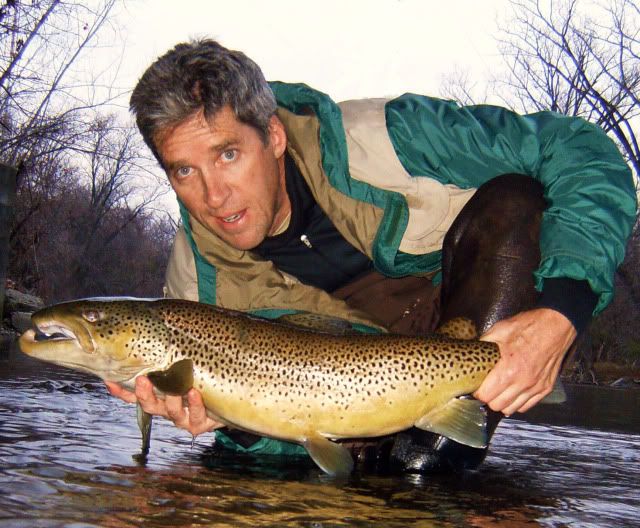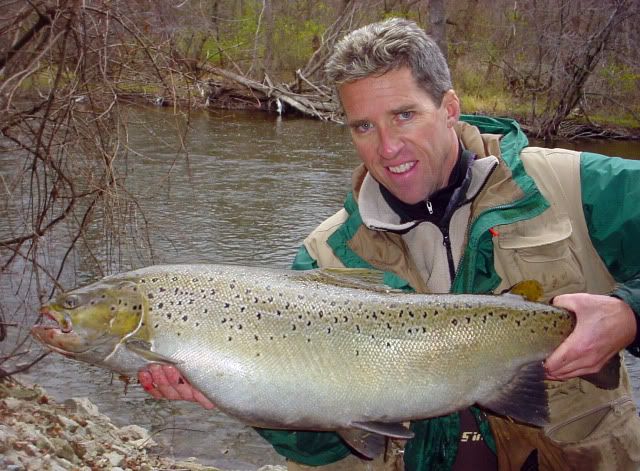Seeforellens and Domestic browns are different strains of the same species. Domestic browns are typically more darker brown colored and have more spots throughout the entire body. Seeforellen have more of a silver look to them and the spots are fewer and the spots less defined. Seeforellen can grow to really large. Typical domestic strain trout are released in the great lakes and small streams in Wisconsin. The brown trout in the small streams grow slower because they eat different food. The lake brown trout have bigger food available and more abundant food. Seeforellen are not stocked in small streams in Wisconsin. Seeforellen literally translates to Sea Trout in German. This does not mean they are exclusively from Germany. Many lakes or Seas in Europe and the surrounding areas have Seeforellen.

Ted Kirkpatrick is pictured with his male domestic strain brown trout he caught and released in a Great Lakes tributary.
The Wisconsin state record lake run trout is 41-pound, 8-ounce brown trout and 40.6 inches long . It was caught in Lake Michigan waters north of Racine. It appears to be a Seeforellen strain. The largest Wisconsin inland brown trout on record is 18 pounds, 6 ounces and was caught in Lake Geneva and it was 34.3 inches long. Both record trout were females. Typically female trout grow faster than male trout. This is also true for the Great Lakes.

This enormous female Seeforellen was caught and released by Ted Kirkpatrick in a Great Lakes tributary. Ted weighed the trout before release and it was an eyelash under 20 pounds.
The spawning times of the Seeforellen and Domestic strains of brown trout are different. The age at maturity can be used to distinguish each strain from the other, but physically the fish are very similar. The “German” or Domestic strain of brown trout may begin staging in harbor mouths for their spawning run beginning in July, with the majority of the run occurring in September and October. The spawning run for Seeforellens generally occurs in November and December. The age at which the fish matures is also a distinguishing characteristic of each strain, with the Domestic brown trout maturing at 2-3 years of age and the Seeforellen at 3-4 years. This later age of maturity in the Seeforellen usually allows for greater growth before their first spawning.
Male adult domestic and Seeforellen strain have a pronounced hooked lower jaw. This area is also called a “kype.” This is also true in the inland adult trout. All of the trout in the inland waters of Wisconsin and the Great Lakes have intermingled the different strains and it is hard to say if a trout is 100 percent Seeforellen or domestic strain or a couple other strains mixed in. Only a laboratory analysis can tell the true ancestry.

